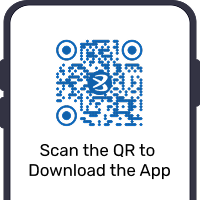What is ROE in the stock market?
- Answer Field
-
It’s a profitability ratio that tells you how efficiently a company turns shareholder equity into net income.
One number you should look at first before putting money into a company is the Return on Equity (ROE). It shows how well the business is making money with your money and the money of other owners.
Consider it a quick test of how well your money is being spent: how much profit are you getting back for every rupee (or dollar) you put in? The math is simple: ROE = Net Income ÷ Shareholders' Equity.
By looking at ROE, you're not just seeing a number; you're also seeing how well the company can turn your investment into steady, long-term profits. It tells you if your money is working hard enough.
Grab the net income (usually after preferred dividends) from the income statement and the shareholders’ equity (assets minus liabilities) from the balance sheet. Divide net income by shareholders’ equity—and if you want a fairer result, use the average equity across the year.
Here’s a quick table:
Input Type | What It Is |
Net Income | Profit after taxes (and preferred dividends) |
Shareholders’ Equity | Assets minus liabilities |
Average Shareholders’ Equity | (Beginning Equity + Ending Equity) ÷ 2 |
Finding your sweet spot for ROE can depend on the industry—but here are some general pointers:
Look for consistency: A stable or rising ROE over time often signals strong, reliable performance.
Beware of unusually high ROE: Very high values could mean the company is taking on more debt to shrink equity, which ups the risk.
Compare with peers: What’s considered “good” varies widely—tech companies often boast high ROE, while utilities tend to have much lower ones.
Bonus check—growth future: Some top growth stocks keep ROEs at 17–50%, showing outstanding return and investor confidence.
Quick gauge of efficiency: ROE is all about how smartly the company is using your equity to turn a profit.
Needs context and comparison: Don’t judge in isolation—see how it measures up over time and against similar firms to get the full picture.
One example of a company with a high return on equity is Apple Inc., which had an ROE of 175.46%in Jan 2023*. This is primarily because of the company's strong capital structure, which includes low debt and high cash reserves, resulting in improved profitability. On the other hand, Uber Technologies had a negative return on equity of -81.7% in the period*.
By studying companies with different ROE levels, we can have a glimpse of how businesses manage their capital structure.
There are flaws in even useful measures. ROE is no different:
If a business takes on heavy borrowing, its asset base shrinks, which can artificially boost ROE. However, this doesn’t reflect genuine profit growth or stronger operational performance.
ROE may rise due to one-time profits that won’t recur, but this increase does not necessarily indicate an improvement in ongoing operational success or the company’s fundamental performance.
ROE becomes unreliable when a company has negative or minimal equity, making the measure misleading. In such cases, it cannot be trusted to reflect true profitability or financial performance.
Industries differ greatly, so comparing a bank’s ROE with a utility’s is misleading—like comparing apples to oranges—since business models, risks, and capital structures are not the same.
If you're looking for a reliable, comprehensive metric to track the profitability of high-leverage companies, ROE is preferable bet. Bajaj Broking. offers demat account with various subscription packs that helps you save big on brokerage. Contact us today to get started!
Share this article:
No Data Found
It’s a profitability ratio that tells you how efficiently a company turns shareholder equity into net income.
Divide net income (after preferred dividends) by shareholders’ equity—ideally averaged over the year—for a clear picture.
It helps you evaluate how smartly a company is using equity to generate profit—and indicates the quality of management.
It usually signals losses—either from poor operations, debt troubles, or negative equity, so tread carefully.
Strong profit margins, efficient asset use, and even high leverage can all boost ROE—but not all means “good.” Keep an eye out.
Disclaimer :
The information on this website is provided on "AS IS" basis. Bajaj Broking (BFSL) does not warrant the accuracy of the information given herein, either expressly or impliedly, for any particular purpose and expressly disclaims any warranties of merchantability or suitability for any particular purpose. While BFSL strives to ensure accuracy, it does not guarantee the completeness, reliability, or timeliness of the information. Users are advised to independently verify details and stay updated with any changes.
The information provided on this website is for general informational purposes only and is subject to change without prior notice. BFSL shall not be responsible for any consequences arising from reliance on the information provided herein and shall not be held responsible for all or any actions that may subsequently result in any loss, damage and or liability. Interest rates, fees, and charges etc., are revised from time to time, for the latest details please refer to our Pricing page.
Neither the information, nor any opinion contained in this website constitutes a solicitation or offer by BFSL or its affiliates to buy or sell any securities, futures, options or other financial instruments or provide any investment advice or service.
BFSL is acting as distributor for non-broking products/ services such as IPO, Mutual Fund, Insurance, PMS, and NPS. These are not Exchange Traded Products. For more details on risk factors, terms and conditions please read the sales brochure carefully before investing.
Investments in the securities market are subject to market risk, read all related documents carefully before investing. This content is for educational purposes only. Securities quoted are exemplary and not recommendatory.
For more disclaimer, check here : https://www.bajajbroking.in/disclaimer
Level up your stock market experience: Download the Bajaj Broking App for effortless investing and trading
